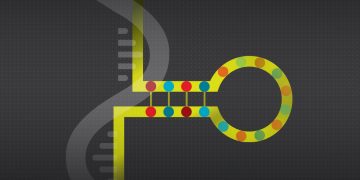
Top 5 Challenges Faced by AAV Developers Today
Adeno-associated viruses (AAVs) are some of the most commonly used viral vectors for gene therapy, supporting approximately 250 clinical trials to date. However, the manufacturing processes are challenging to scale. Read about five key issues that gene therapy manufacturers who use AAVs need to look out for.

Introducing the Reliance Select cDNA Synthesis Kit
The Reliance Select cDNA Synthesis Kit is the newest reverse transcription product from Bio-Rad. This high-performance kit features Reliance Reverse Transcriptase, a novel chimeric enzyme that delivers superior results across a broad dynamic range, even with challenging samples. The Reliance Select cDNA Synthesis Kit delivers more accurate reverse transcription quantitative PCR (RT-qPCR) results, even from samples containing PCR inhibitors or degraded RNA.

A New International Standard to Measure DNA?
From quantifying a patient’s tumor DNA to counting the viral load of an individual infected with COVID-19, the breadth of digital PCR (dPCR) applications continues to grow and fulfill critical scientific needs. dPCR offers the ability to count nucleic acid molecules directly, rather than extrapolating the quantity from standard curves as with many other methods. By harmonizing diagnostic procedures on dPCR platforms, the scientific and medical communities can become more coordinated and efficient.

Data Standardization
Increasingly, biopharma research & development experimental data are siloed and stored in varying formats. This makes it difficult to search, retrieve and share data. Furthermore, these data are often not interoperable, making it impossible to compare. Data needs to be better managed to be more collaborative, shareable, and interoperable, in order to accelerate research and continue making breakthroughs. Data standardization aims to forge a path toward machine-readable and actionable data that can be found, accessed, and reused with minimal human intervention.

7 Tips for Purchasing Your Next Cell Sorter
Presented here are some tips to help you avoid buyer’s remorse and make an educated decision about which instrument to purchase. These tips provide you with the tools to make an informed decision when purchasing a cell sorter.

Introducing the CFX Opus Real-Time PCR Systems —
A Modern Take on Bio-Rad Consistency
Coming soon: The next iteration in Bio-Rad’s tradition of qPCR excellence. The compact CFX Opus Real-Time PCR System is more connected, consistent, and easier to use than ever before, and is available in 96- and 384-well formats. The CFX Opus Systems launch with our new BR.io cloud platform and the latest version of CFX Maestro Software, for complete instrument control and data analysis capabilities.

Sorting an Old Problem: Are Cells Stressed by Fluorescence-Activated Cell Sorting?
Fluorescence-activated cell sorting is a valuable tool for research, but could the physical forces of sorting stress the cells, altering their behavior and confounding experimental results? Recent research found that although cell sorting activated p38 MAPK stress signaling, no functional or structural changes were observable. The results indicate that jet-in-air systems such as the Bio-Rad S3e Cell Sorter do not alter cell behavior.

How to Make a Successful Vaccine
As phase 3 clinical trials of investigational vaccines for COVID-19 begin in the U.S., you may be wondering what it takes to make an effective vaccine? In case you missed it, check out our Hanging with My Chromies podcast, episodes 6 and 10 on vaccine development and viral spread, and learn about the role chromatography plays in making a successful vaccine.

10 Tips for Setting Up a Successful Cell Sorting Experiment
Incorporating fluorescence-based cell sorting into your lab grants you powerful access to new research areas and rarer cell types without sacrificing efficiency or results. New, powerful techniques like CRISPR and single-cell analysis are enhanced by the isolation of specific cells. But isolating cell populations of the right quality and quantity is both challenging and time consuming. We offer some tips to set yourself up for success and get the most out of your sorts.

Globally Aware Genomes — an Informatics Challenge
The Human Genome Project was completed nearly two decades ago, in 2003. The primary vision of this project was to produce a human reference genome, a representative example of the set of genes in one idealized individual human. However, the currently available reference genomes do not represent the genetic diversity found across different human populations. As such, any downstream products (drugs therapies, personalized medicine, etc.) derived from the human genome will not accurately represent the vast majority of the human population.
